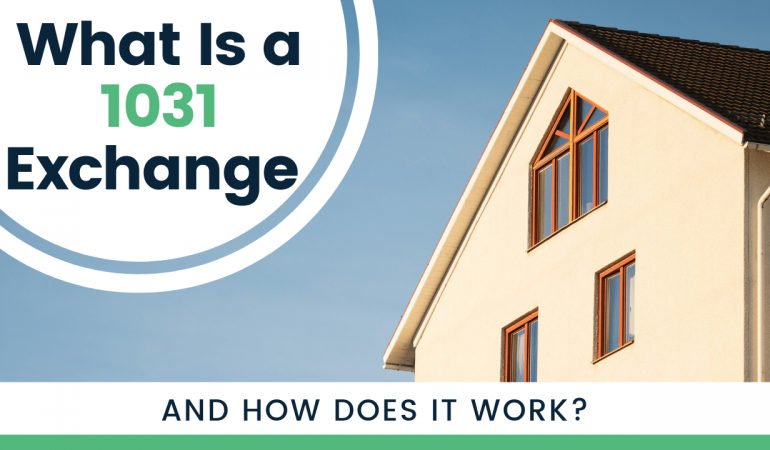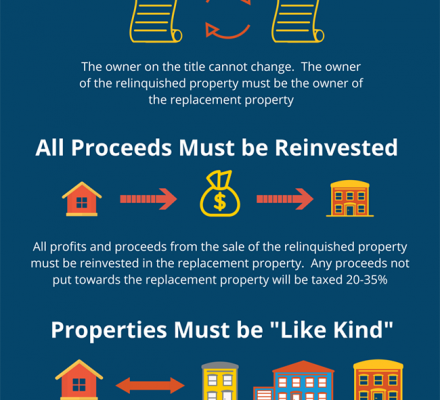
1031 Information Center: After my first 1031 tax exchange, when will I be eligible for another?
Because of the advantages the 1031 exchange process offers to real estate owners, the IRS has placed controls on the length of time that your replacement property (the property you bought after selling your original property) must be held before you can sell it. This is true both if you want to sell your replacement property as an independent transaction AND if you wish to use your replacement property to enter another 1031 tax exchange. The reason for this is to control the number and types of transactions that can be enacted under the 1031 exchange program to avoid abuse.
If you find that you must sell or exchange your replacement property before the end of the federally-mandated holding period, it is possible to side-step the regulation by using your replacement property (generally a rental property) as your main residence. The rationale behind this is simple: while selling business or rental properties subjects you to the payment of capital gains taxes, selling your personal dwelling is NOT subject to capital gains taxes (as long as the capital gain is not above $250,000 for a single person or $500,000 for a married couple). If you sell your personal residence, then, you are unlikely to owe capital gains taxes. You can then move into your former rental property. After you have lived in that property for a specified period of time (again, governmentally regulated), it will qualify as your personal residence – meaning that you can sell this former replacement property without paying capital gains taxes.
In some cases where a 1031 exchange is not possible, another option may be used to effectively defer payment of the capital gains tax. One alternative to the 1031 exchange is the structured sale annuity – also called an "Ensured Installment Sale." This seller tool is a combination of a standard installment sale and a structured annuity. This means that the seller will receive sale proceeds over a set period of time, in a series of installments. In this scenario, the tax situation is such that the seller will be required to pay taxes only on income that has actually been received – thus allowing the seller to effectively string out tax payments over time rather than tackling them in one large chunk.
If, for example, you are to receive $100,000 worth of capital gains on a relinquished property, you might sell the property in an installment plan that arranges for you to only receive $5000 in capital gains each year – vastly diminishing the amount of capital gains taxes you will need to pay immediately. The ensured installment sale is an excellent option for those who are having difficulty finding a replacement property for a 1031 exchange or who cannot meet time limits.
1031 Information Center: What is the difference between a 1031 exchange and a property swap?
Historically, the practice of essentially trading one property for another has been fraught with trouble – at least as long as taxes have been in existence. Why? Simple. Consider this basic scenario: I wish to purchase your property. You wish to sell your property to me. In order for me to have the money I need to buy your property, however, I first must sell the property I already have – but I don't want to sell my property until I know for sure that I've bought yours. Additionally, if I sell my property, the taxes I must pay might cost me so much that I no longer have enough money to purchase your property.
Complicated? It can certainly seem that way.
The classic your-property-for-my-property swap is called a two-party exchange – but it only works if you also want my property. Not surprisingly, this happens fairly rarely: two property owners are not usually mutually interested in one another's property. To get around these sticky situations, the idea of a three-way or multi-party swap came into play. It involved using an uninvolved third party to hold the money (and/or one of the transferred properties) along the way. Trouble often arose when one leg of the triangle collapsed or proved untrustworthy.
The solution to the problem, then, came in 1991, when the IRS issued regulation 1031. The 1031 exchange allows you to sell your property right now and keep all the proceeds to buy another property later. To keep things above-board, the transaction must be done with the help of a Qualified Intermediary. A 1031 exchange, then, is a legal solution to a sticky situation – meaning that you don't have to find a way to "swap" properties if you want to create an advantageous tax situation.
Another streamlined feature of the 1031 tax exchange is that you do not need the involvement (only the implicit cooperation) of either the buyer of your relinquished property of the seller of your replacement property. The use of a Qualified Intermediary effectively avoids the need for a third leg to the triangle – and makes it possible for 1031 exchanges to run flawlessly time and time again.
Simply put, the 1031 exchange is an unabashedly simple and effective way to sell appreciated business, farms, land, and investment properties without paying capital gains taxes. It allows for a simple, regulated, legal method for the transfer of appreciated property and the growth of real estate investor wealth.




